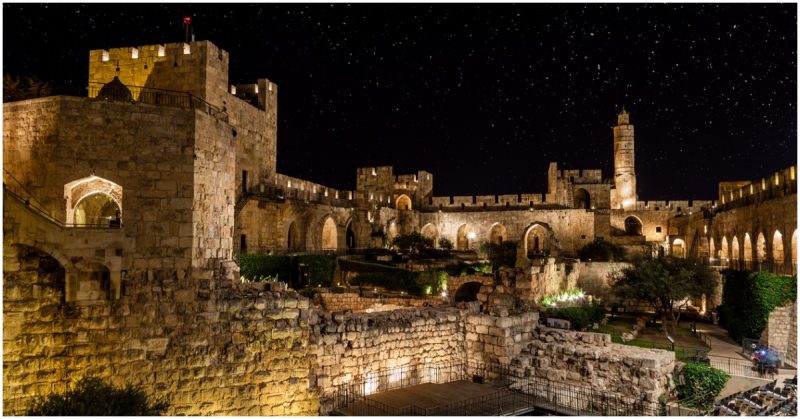During Rome’s centuries as a growing empire it faced countless rebellions and challenges to its dominance of the Mediterranean, the old Italian allies even revolted as late as the first century BCE. If Rome was going to have a firm hold on their empire and continue to call the Mediterranean Mare Nostrum (Latin for “our sea”) they had to have a stable empire. So when the Jewish province of Judea revolted in 66 CE, Rome was determined to firmly stamp out any resistance at any cost.
The Jewish revolt did not fare well, with future emperor Vespasian having great successes before heading back to Rome to be proclaimed emperor. His successor in the war and also future emperor, Titus, captured Jerusalem by 70 CE. Though the center of the rebellion was taken, many rebels had not given up the fight and conducted many raids and guerrilla ambushes using the fortified plateau of Masada as their base of operations.
As the bulk of the war was finished, few Roman forces were left in the region and the solitary tenth legion was tasked with mop up duty. They had success capturing a few smaller fortifications but the base at Masada was quite the objective.
The plateau at of Masada featured cliffs ranging from 90-400 meters high with enough flat space at the top for a fortified town complete with natural wells and cisterns and space for small fields of crops. Though the cliffs were daunting enough, a 4 meter high wall surrounded much of the plateau. The one path up was wide enough for two people shoulder to shoulder and vulnerable to missile fire.
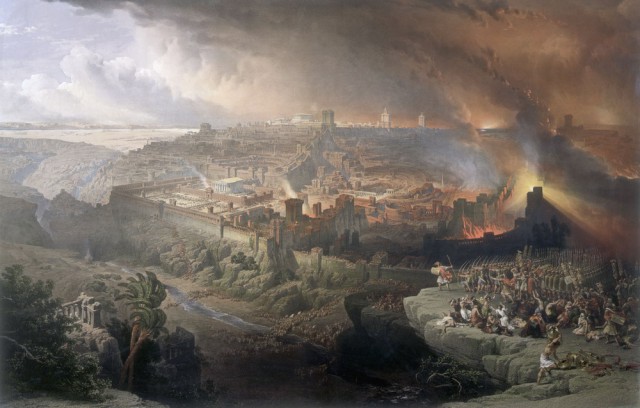
The men who occupied Masada, led by Eleazar ben Ya’ir, were known as the Sicarii, (dagger-men) and were a particularly violent Jewish group with immense hatred of Rome but they were known to kill other Jews if they were at all sympathetic to the Romans. This group under Eleazar ben Ya’ir actually exterminated a 700 man Roman garrison on their way to Masada. Their name stems from their method of quick dagger executions of Romans and their sympathizers before disappearing into the crowd. Though their number at Masada, including women and children, totaled just under 1,000, it is safe to say that the Sicarii would do everything to disrupt Roman rule as long as they possibly could, so the Roman X legion under general Silva began a siege of the fortress in 72 CE.
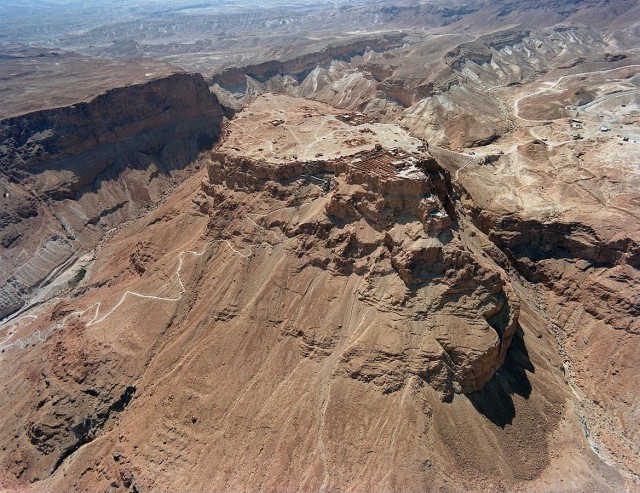
General Silva began the siege by building several (as many as eight) camps around Masada and linking them with a circumvallating wall. This completely cut off the Sicarii’s communications and supply but they still had the advantage. The Romans had a full legion as well as multiple slave laborers, totaling around 10,000 men in an extremely arid region with very limited food, water or good shelter. The Sicarii, meanwhile had none of these problems, and their small population coupled with the ability to have small fields meant that they could survive many years of siege.
Knowing that this must be completed quickly, Silva decided to build a very large earthen ramp up to the Masadan walls. He choose an area where the cliffs bulged out and gave his project a natural head start. Though there were thousands of recently captured Jewish prisoners for labor, this siege exemplifies the dual Romans of a legionary as a soldier and construction worker. In as few as two months one legion built several fortified camps complete with several connecting walls and conceived of and began construction of a massive 114 meter tall earthen ramp.
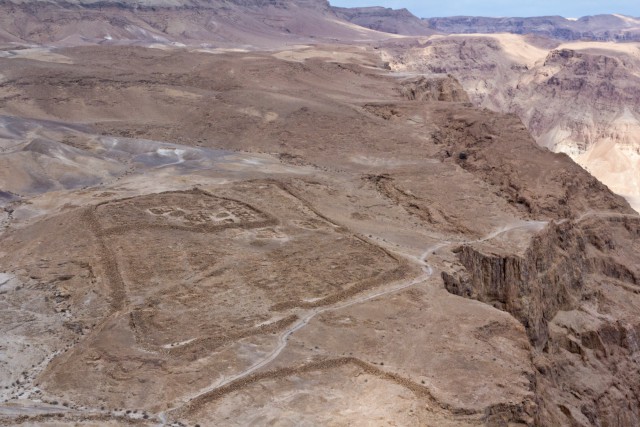
There are no mentions of Sicarii counterattacks, though it is very likely that the workers suffered missile fire as the ramp began to come closer to the walls. The Romans constructed a massive siege tower faced with iron or bronze to be able to rain fire over the walls. The tower had a ram to break down the wall. To counter the certain destruction of their outer walls the Sicarii built an inner second wall of wood, but this was set aflame as the ram breached the main wall.
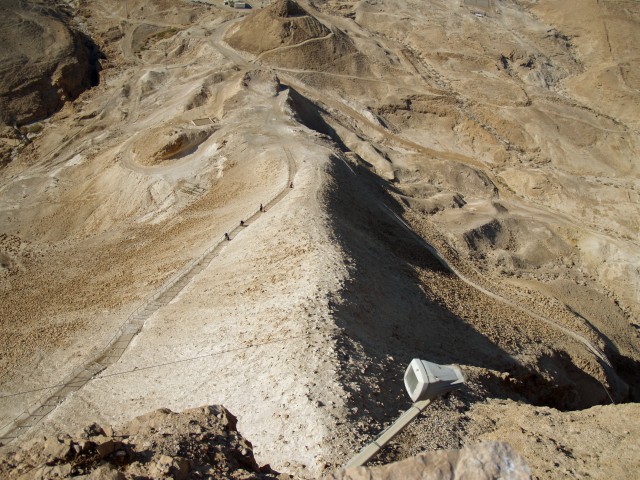
After the fire burnt out, likely the next day, April 16th 73 CE, the Romans broke into the small fortress to find nothing but stillness and silence. All but five of the nearly 1,000 Sicarii and their families were dead. The survivors were two women and their children who hid in the cistern. They told the Romans that the men had decided that though they had no hope of winning the battle, they could still defy the Romans, who would have them in chains or dying in the arena. The men killed their families and, according to their beliefs suicide is a sin, they drew lots to decide the order of men killing each other with the last man left standing killing himself. They burnt everything of value, but left the food stores to show the Romans that they weren’t starved into this decision, but killed themselves solely to spite the Romans.
Though this siege was actually much smaller in scale than many other great sieges in history, it was quite symbolic for both the Jews and the Romans. For the Romans it was a powerful symbol of their might as well as their resolve to finish a conflict no matter what. The Sicariians at Masada were violent, but the actual city of Jerusalem was taken. The siege of Masada showed the iron grip Rome sought to have on their troublesome provinces. Though Empires are often seen in a negative light, this firm ruling strategy actually gave the Mediterranean a relatively peaceful, progressive period spanning two centuries known as the Pax Romana.
For the remaining Jews, Masada was a symbolic, though conflicting stand against the Romans that has been viewed in different ways all the way up to modern times. Though the act of mass murder/suicide was certainty a message of defiance for the Romans and remaining Jews, the act of murdering their families was a terrible sin. Also, while the Sicarii were fearsome rebels standing up for Judaism, their methods were brutal and violent, and the group at Masada have often been described as troublesome outlaws rather than religious rebels. The battle as a whole can be interpreted many ways, but one must recognize the unique location of this great siege and be thankful for its excellent preservation.
